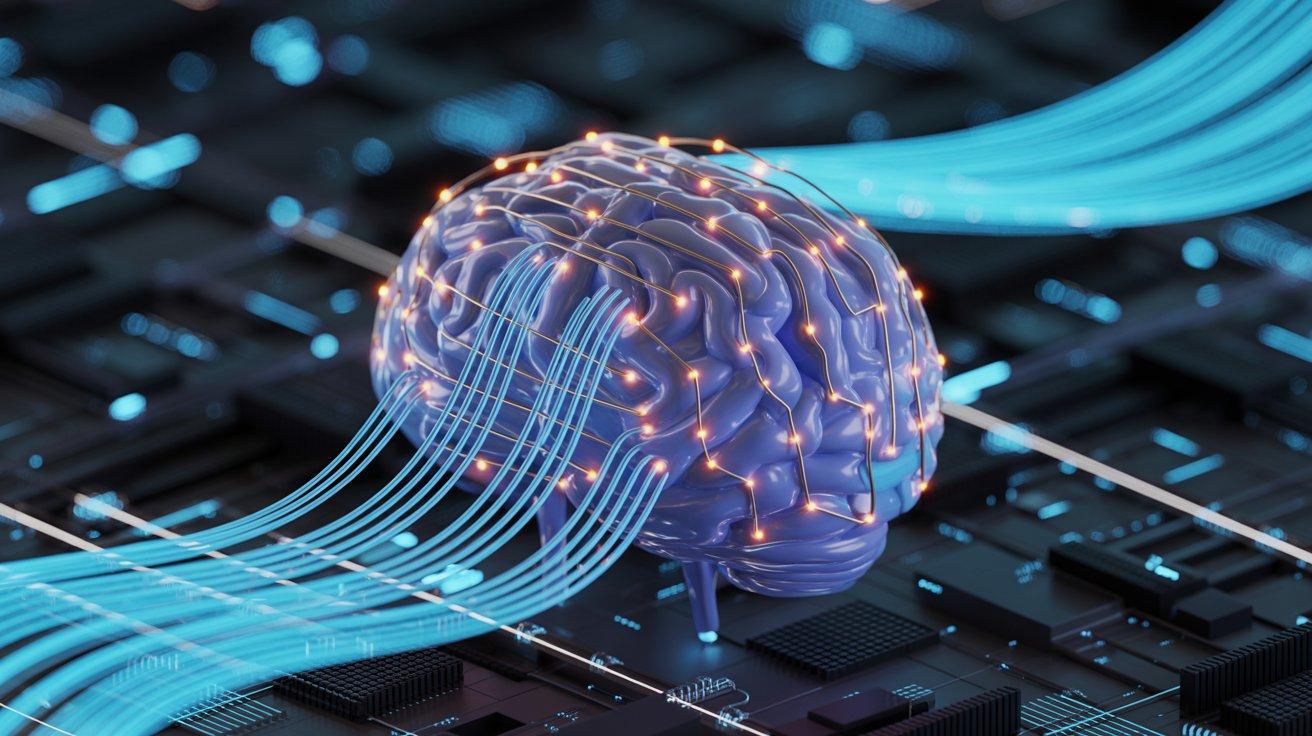What is Machine Learning Development and Why It Matters?

In today’s fast-moving digital world, you may have come across the term “machine learning” (ML). It often shows up in conversations about artificial intelligence, big data, and automation. But what exactly is machine learning, and why is its development so important for businesses, governments, and everyday life?
In this blog, we’ll break down the concept of machine learning development in simple terms, explain how it works, explore real-life examples, and discuss why it plays a vital role in shaping our future.
What is Machine Learning?
Machine Learning is a type of artificial intelligence (AI) that allows computers to learn and make decisions or predictions without being specifically programmed to do so. Businesses looking to harness this technology can benefit from professional machine learning development services, which provide tailored solutions for data analysis, predictive modeling, automation, and more—helping organizations make smarter, faster decisions.
Let’s break that down. Imagine teaching a child to recognize a dog. You show the child several pictures of dogs, and over time, the child learns what a dog looks like. Similarly, in machine learning, we “teach” computers using data. Based on the data we give them, they learn patterns and make predictions or decisions.
For example:
-
You give a computer thousands of emails marked as “spam” or “not spam”.
-
The computer analyzes this data and starts recognizing common traits of spam emails.
-
After learning, it can look at new emails and decide whether they are spam or not — all by itself.
What is Machine Learning Development?
Machine learning development is the process of building, training, and deploying machine learning models. It’s like training the brain of a computer system using data, logic, and mathematical techniques.
This development process involves:
-
Understanding the problem
-
Collecting and preparing data
-
Choosing the right model
-
Training the model
-
Testing and validating the model
-
Deploying the model into real-world systems
-
Maintaining and improving the model over time
Let’s walk through these steps in a bit more detail — using everyday language.
Step 1: Understanding the Problem
Before jumping into data or writing code, it’s important to clearly understand what problem you’re trying to solve. Are you trying to predict if a customer will buy a product? Or detect fraud in banking transactions? Or maybe recommend movies on a streaming platform?
A clear understanding of the goal helps guide the rest of the process.
Step 2: Collecting and Preparing Data
Machine learning models learn from data. So, the next step is to gather the right kind of data.
For example, if you're building a model to detect whether an image contains a cat, you need a lot of labeled images — some with cats and some without.
But raw data is often messy. It might have missing values, errors, or irrelevant information. So data scientists clean, organize, and prepare it for training. This step is often called “data preprocessing” and is one of the most important parts of the process.
Step 3: Choosing the Right Model
There are different types of machine learning models depending on the task at hand. Some popular models include:
Choosing the right model is like picking the right tool for a job. Some models are better for images; others are better for text or numbers.
Step 4: Training the Model
Training is when the model starts learning. The computer looks at the data and tries to find patterns.
For instance, in a spam filter, the model learns that emails containing the word "win a prize" or "click here" might be spam. It adjusts itself based on the data so it can make better predictions in the future.
This step involves a lot of math and computer power, but at its core, it’s about teaching the system to recognize relationships in the data.
Step 5: Testing and Validating
Once the model is trained, it’s time to see how well it performs on new data it hasn’t seen before. This step ensures that the model isn't just memorizing the training data but can actually make smart predictions.
We divide our data into training and testing sets for this purpose. If it performs well on the test data, it’s a good sign.
Step 6: Deploying the Model
If the model performs well, it’s time to put it to work. This is called deployment. The model is added to apps, websites, or machines so it can be used in the real world.
For example:
-
An e-commerce site might use a model to recommend products.
-
A bank might use one to detect unusual transactions.
-
A healthcare app might use one to predict disease risks.
Step 7: Maintaining and Improving
Machine learning models can become outdated over time. New data, changing user behavior, or new patterns can reduce their accuracy. That’s why developers need to keep monitoring and updating the models.
It’s a cycle — collect new data, retrain the model, and redeploy.
Why Machine Learning Development Matters
You might be wondering: why is all this so important?
Let’s look at a few reasons:
1. Solving Real-World Problems
Machine learning is used in many fields to solve complex problems that were once impossible or time-consuming.
-
Healthcare: Detecting diseases early from medical scans or predicting patient risks.
-
Finance: Preventing fraud, automating trading, and offering personalized advice.
-
Agriculture: Predicting crop yields, spotting plant diseases, or optimizing water use.
-
Retail: Managing inventory, predicting demand, or customizing the shopping experience.
2. Saving Time and Resources
Manual tasks can often be automated using machine learning, saving time and money. For instance:
-
Sorting emails
-
Scanning legal documents
-
Reading handwritten forms
-
Forecasting sales
These tasks can be done faster and with fewer errors using well-trained ML models.
3. Enabling Personalization
Ever wonder how Netflix knows what shows you might like? Or how Spotify builds your playlists? Or how Amazon recommends the perfect product?
That’s machine learning at work — analyzing your behavior, learning your preferences, and making smart suggestions just for you.
4. Making Smarter Products
Smart assistants like Siri, Alexa, or Google Assistant get better over time by learning from users. Self-driving cars use machine learning to understand roads, signs, and people. Chatbots use it to understand and reply to customer questions.
Without machine learning development, these smart technologies wouldn’t exist.
5. Staying Competitive
In today’s business world, staying ahead often means being smarter and faster than competitors. Companies that adopt machine learning can:
-
Understand customer needs better
-
Make faster decisions
-
Predict trends
-
Optimize operations
This gives them a big advantage in the marketplace.
Challenges in Machine Learning Development
While machine learning brings many benefits, it also has its challenges:
-
Data Quality: Bad data leads to bad results.
-
Bias: If the training data is biased, the model’s predictions will also be biased.
-
Complexity: Building effective models requires skilled people and powerful tools.
-
Privacy: Using personal data responsibly is a big concern, especially in healthcare or finance.
That’s why responsible and ethical development is just as important as technical skill.
The Future of Machine Learning Development
As more data is created every second and computer power continues to grow, the future of machine learning looks very bright.
We can expect:
-
More automation in industries
-
Better healthcare through early diagnosis
-
Safer and smarter cities
-
Improved customer experiences across the board
But it also means more responsibility — making sure these tools are used fairly, safely, and transparently.
Conclusion
Machine learning development is not just a tech buzzword — it’s a powerful way to solve problems, save resources, and create intelligent systems. Whether it's helping doctors detect disease or giving you better movie recommendations, ML is all around us. Partnering with a skilled AI Development Company can help you turn machine learning ideas into real-world solutions—designed to fit your specific needs and deliver measurable results.
As we move forward, understanding machine learning and its development process will become increasingly important — not just for developers, but for anyone who interacts with technology.
So the next time Netflix recommends a show you love or your phone unlocks by recognizing your face, you’ll know — that’s machine learning in action!







